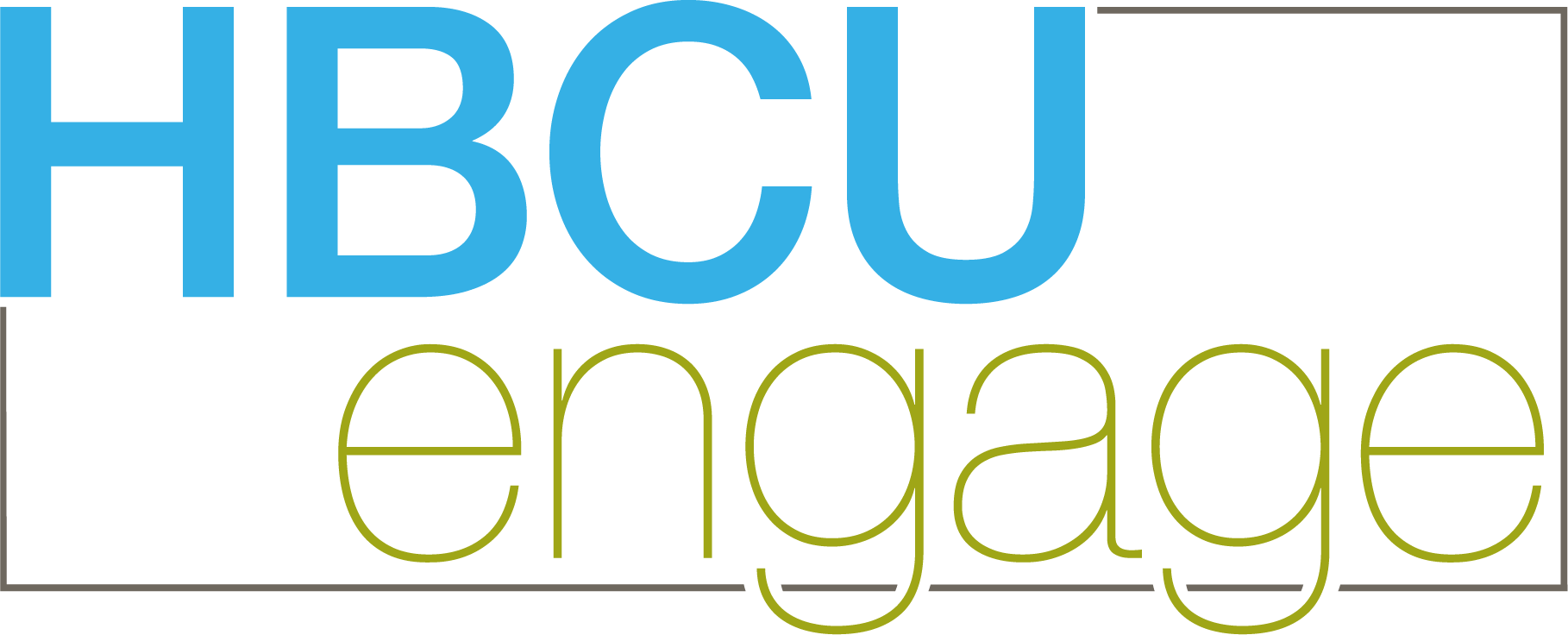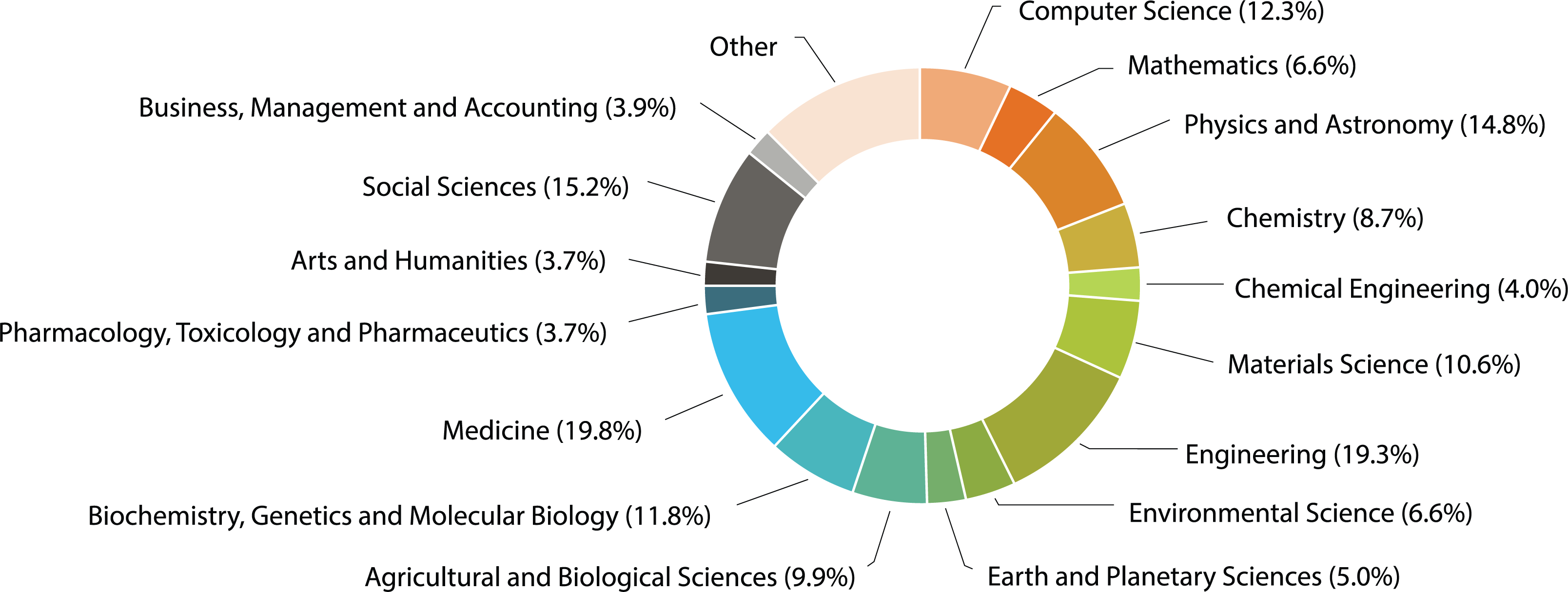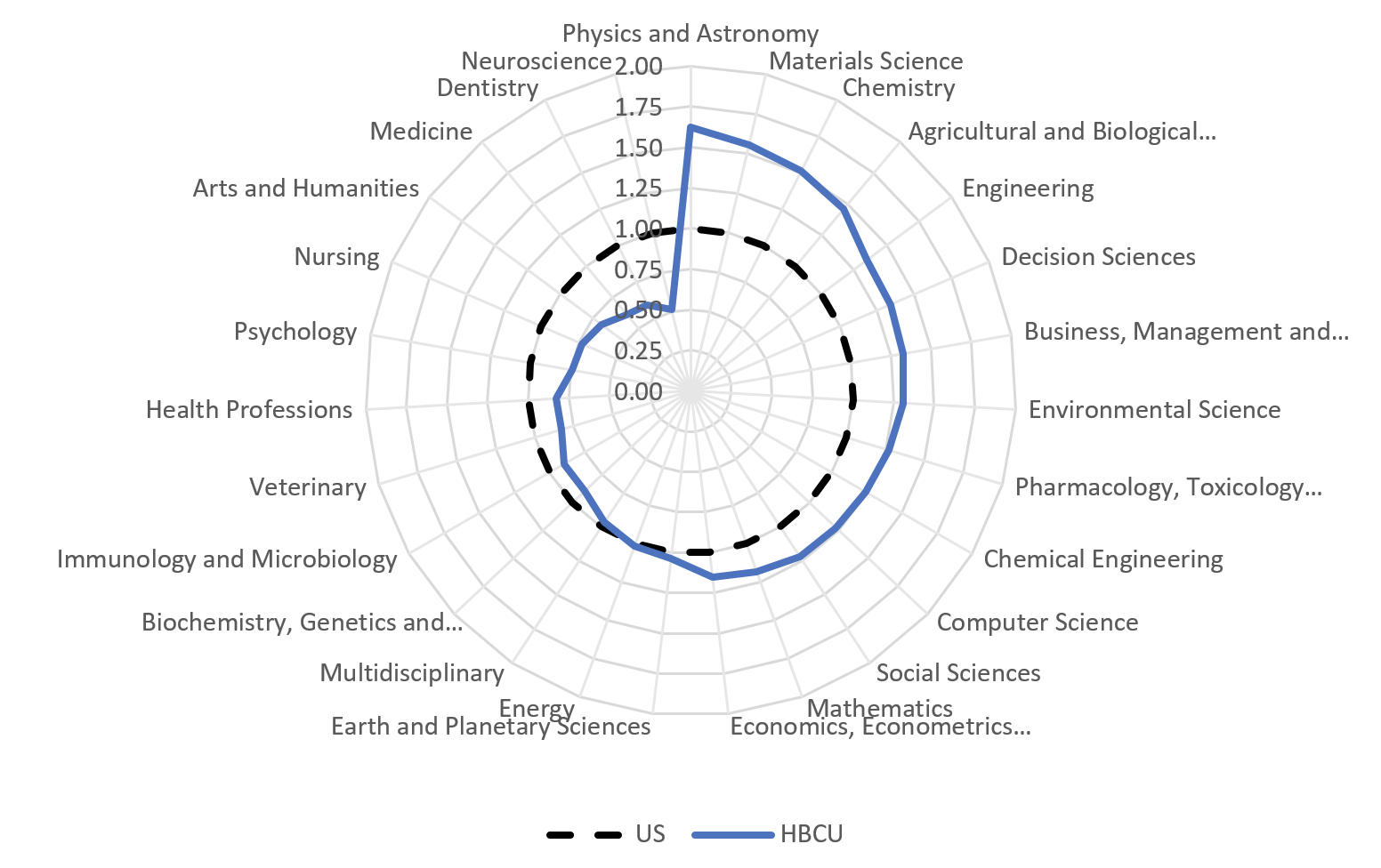
Historically Black
Colleges & Universities
Research Capabilities
HBCU Research Overview, 2012 – 2021
HBCUs have substantial collective research expertise in a number of specific social science and STEM research areas impacting Black populations, ranging from research related to patient selection in clinical trials to research on food deserts. A common misconception is that HBCUs emphasize social science and humanities. But over 80% of HBCU research is in STEM fields.
HBCU research is not limited to topics specific to the Black community but spans a wide range of scholarly disciplines. Overall, HBCU research in these areas has a field-weighted citation impact (FWCI) of 1.40, outperforming global research averages in the corresponding subject areas by 40% in terms of citation.
Overall Research Performance (Source: Scopus.com)
46,939
Scholarly Output
25,056
Authors
1.40
Field-Weighted Citation Impact

Field-Weighted Citation Impact (FWCI) measures the citation impact of the publications compared to similar publications in the field. A FWCI of 1 means that the output performs as expected for the global average; an FWCI of 1.44 means 44% more cited than expected.
Relative Activity Index (RAI) by Subject Area compared to other U.S. institutions:
- Physics & Astronomy
- Materials Science
- Chemistry
- Engineering
- Agricultural & Biological Sciences
- Decision Sciences
HBCU institutions are disproportionately in the Southern United States, and a substantial number are in rural areas or small cities and towns. HBCU institutions have a strong history of advancing research, teaching, and learning in agricultural sciences.
Societal trends are factors for generating momentum with research activity. Climate change and declining natural resources are ecosystem-focused topics and a large part of the research agenda at the 1890 universities. Note: The Association of Public and Land-grant Universities (APLU) also highlight these topics as key focus areas for Research Activity at the 1890 Universities

RAI by Subject Area examines whether a field is over-represented or under-represented compared to national averages as a percentage of all research published. The graph shows, e.g., HBCUs publish more of their research in Materials Science (>1.00) and less in Nursing (<1.00) than the U.S. average. HBCUs have a high RAI in a wide variety of STEM fields, with the exception of biomedical research.
TOP Industry and Academic Collaborators with HBCUs, 2012-2021
R1 Academic Institutions:
- Florida State University: 3,389 publications, 1.13 FWCI
- University of Michigan, Ann Arbor: 1,440 publications, 6.89 FWCI
- University of Washington: 1,415 publications, 12.43 FWCI
- Vanderbilt University: 1,351 publications, 4.23 FWCI
- Duke University: 1,271 publications, 9.15 FWCI
U.S. Corporations:
- Science Systems and Applications, Inc.: 143 publications, 2.58 FWCI
- GATS, Inc.: 39 publications, 0.87 FWCI
- Brimrose Corporation of America: 31 publications, 0.68 FWCI
- Eli Lilly: 31 publications, 6.31 FWCI
- IBM: 31 publications, 2.22 FWCI
Top Areas of HBCU Research Activity
HBCUs outperform U.S. institutions as a whole in a variety of United Nations Sustainable Development Goals (SDG)related research areas, including gender equality, reduced inequality, peace and justice, and clean energy research. This includes publishing proportionally more research on the topic, more highly cited research, or both as compared with U.S. national averages.
Benchmarking SDG Output as Share of Research

- HBCUs produce a greater share of research than U.S. institutions as a whole across 14 of the 16 UN SDG areas
- HBCU research is more highly cited than the U.S. average in 5 SDG areas, by field-weighted citation impact (FWCI):
- SDG 5: Gender Equality (107% higher citation rate)
- SDG 16: Peace & Justice (106% higher citation rate)
- SDG 3: Good Health & Well-Being (13% higher citation rate)
- SDG 2: Zero Hunger (12% higher citation rate)
- SDG 9: Industry, Innovation & Infrastructure (9% higher citation rate)

HBCU Citations in Policy Publications
Although HBCU research is cited in policy documents at a lower rate than the U.S. average, those publications that are cited tend to have a larger FWCI value than that for all HBCU research and slightly higher than the corresponding U.S. policy documents’ FWCI value.
- 3.6% of HBCU research (1,699 publications) has been cited in policy documents, compared to the U.S. average, 5.6%
- HBCU research cited in policy documents averages a 3.75 FWCI vs 1.40 for all HBCU research
- HBCU research cited in policy documents has a slightly higher FWCI value than the corresponding U.S. FWCI value (3.75 vs 3.69)
Research Areas Ripe for Collaboration
Computer Science
Recent data for 2021 shows a substantial increase in federal research funding to HBCUs after a long period (2011-2020) of stagnation and limited funding.
Health Disparities and Health Equity
Chronic diseases that plague the U.S. population often differentially impact communities of color. This is a research opportunity for pharmaceutical and medical industries.
Climate Change
Only around 2% of the geoscientist workforce is Black, yet research shows that communities of color are disproportionately impacted by the climate crisis and broader environmental impacts, such as air pollution.
Source : https://www.zippia.com/geoscientist-jobs/demographics/
Opportunities for Partnership
- 3.2% of HBCU publications have a corporate coauthor, less than the U.S. average (4.7%). This gap likely reflects a lack of awareness of HBCU research strengths and is expected to diminish as HBCUs join the ranks of R1 institutions.
- Research capacity expansion should be targeted, like funding for sponsored research, student internships and faculty fellowship programs, and university-industry co-working environments.
- Funds that give faculty dedicated time and resources to work on research are likely to be among the most effective expenditures to increase capacity.
- Early and consistent targeted investments in resources and a long-term engagement with the institution are most likely to yield maximum benefits for both the university and its industry partners.
To learn more about this UIDP initiative, please visit: https://bit.ly/UIDP-HBCU
For specific inquiries, please email: info@uidp.net or call us at 803.807.3679




